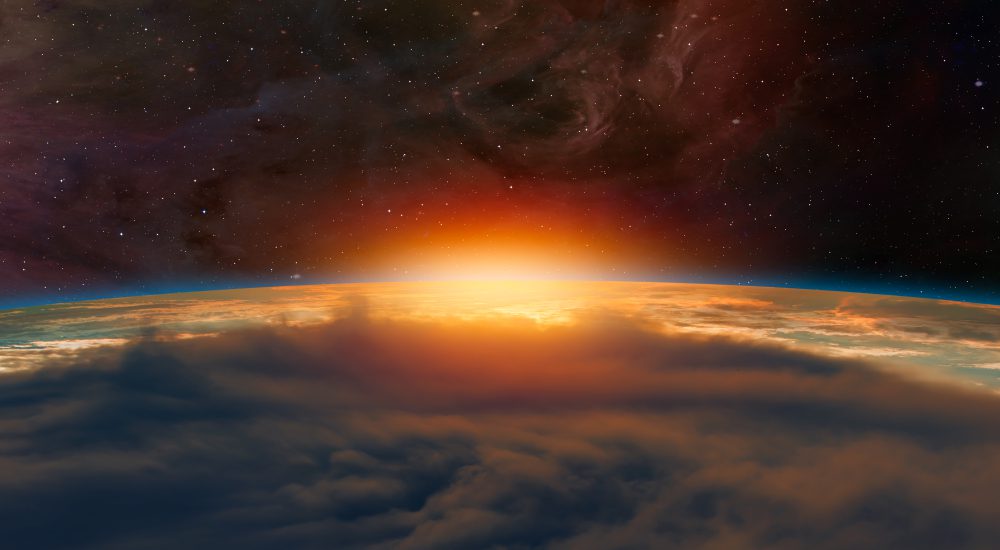Are you passionate about knowing as much as you can about the universe? Then you’re going to love reading about the latest Milky Way discoveries! As you probably know by now, when we look up, every single star we see is basically in the Milky Way, which is the spiral galaxy we call home.
The Milky Way holds every alien planet humans have been able to spot so far, and most likely billions more. On a dark night, the dense planet of the Milky Way winds just like a ribbon across the sky. However, on a darker day, mostly in areas where there’s no pollution, that ribbon becomes intensely spangled with stars.
In fact, you might even notice the dusty clouds and the gas deeply hidden in the space. Those clouds were so vivid that Australia’s Aboriginal people saw the shape of an emu in them. Let’s see what some of the most interesting Milky Way discoveries are:

The Milky Way is flat.
Our galaxy is a hundred thousand light-years old but only a thousand light-years thick. Within this flattened and warped disc, the sun and the planets around it are embedded in a curving arm of gas and dust. This puts the solar system no less than 26,000 light-years away from the galaxy’s super-turbulent core.
There’s a bulge of dust and stars that swaddle right in the middle of the galaxy. It looks like a dollop of whipped cream plopped on both sides of a pancake. It’s important to understand that our own concept of space might not apply in outer space. Luckily, we have analogies!
Earth is 18 galactic years old.
The solar system zooms through interstellar space at around 500,000 miles an hour. However, even at that rate, it takes around 250 million years to travel once around the almighty Milky Way.
The last time our 4.5-billion-year-old planet was in the spot it is today, the continents as we know them were fitted together completely in a different manner, dinosaurs were emerging, and mammals were evolving. Also, our planet was going through one of the most profound mass extinctions in its history—an event known as the Great Dying.
There’s a monster black hole in the galaxy’s middle.
Also known as Sagittarius A*, the supermassive black hole weighs no less than four million times the mass of the sun. While we’ve never seen the object directly, it is hidden behind thick clouds of dust and gas. Astronomers managed to follow the orbits of stars and gas clouds close to the galactic center, which also allowed them to infer the mass of the cosmic heavyweight hiding behind the curtain.
It seems that supermassive black holes are parked right in the middle of most galaxies, and some of them are even feeding on nearby matter so greedily that they shoot out strong jets of radiation. This radiation can be seen from millions of light-years away.
The Milky Way will die at some point.
It seems that in four billion years, the Milky Way will eventually collide with its closest neighbor, the Andromeda Galaxy. The two spiral galaxies are now hurtling toward each other at 250,000 miles an hour. When they smash into each other, trust me, it won’t be as cataclysmic as you think (not that you sit every day and imagine how bad the impact of it all would be, but anyway).
As scientists say (and they do know some stuff), Earth will survive, but all those fast stars in the galaxy will likely be destroyed. Instead, the newly formed mega-galaxy might offer a night skyscape with an incredible blend of stars and streamers, unlike anything we see today.

Our sun is one star among several hundred billion.
“There are no less than a hundred billion stars in the Milky Way. If you hear it from someone, remember that they’re just trying to impress you because, in reality, we can’t even tell how many stars are in our galaxy.
Most of these stars are dim because of their low mass, which makes them very hard to detect over vast cosmic distances. Also, there are massive clouds obscuring the bulge of stars that are close to Sagittarius A*. Astronomers think they’ve somehow estimated the total number of stars based on the Milky Way’s mass and brightness, but what they believe to be precise numbers are still awfully elusive.
We are surrounded by a dark halo.
The Milky Way is closely embedded in a clump of dark matter that’s far larger and more massive than the galaxy itself. In the late 1960s, astronomer Vera Rubin discovered the presence of these invisible halos around galaxies.
She initially observed that stars close to the edge of Andromeda were whipping around the galaxy’s center at such speeds that it should send them flying off right onto the edge of space (it’s a metaphor; the universe has no edges). However, they weren’t, which means that there’s a specific cosmic glue that holds everything together. The glue, as we know it now, is called dark matter.
We hang out with ancient stars.
Did you know that the Milky Way is surrounded by more than 150 ancient groups of stars? Some of them are among the oldest in the universe. Also known as globular clusters, these stellar “gatherings” live in the Milky Way’s halo and orbit the galactic center.
Each is crammed with hundreds of thousands of stars. Moreover, hanging around the Milky Way are dozens of satellite galaxies. While most of these are somehow tough to spot, the small and large Magellanic clouds still glisten each night in the southern sky.
The galaxy is an island in a stream of stars.
The Milky Way is a bit competitive, so it eats away at galaxies that come too close. Throughout the years, scientists studying the galaxy’s fringe have noticed two dozen faint streamers of stars that are the remnants of galaxies past. These ghost-like stellar rivers appeared when the Milky Way’s powerful gravity ripped apart smaller galaxies, which left behind glittering strands of leftovers.
The galactic center is blowing hot air.
The Milky Way is blowing enormous bubbles of hot gas and energetic particles. Stretching far above and below the galactic plane, these Fermi bubbles jump straight out of the galaxy’s center. They are fueled by a wind blowing at no less than two million miles an hour, 10,000 times more than anything you can imagine. It is still a bit unclear why bubbles exist, but scientists say they could be linked to the frenzy of star death and formation surrounding Sagittarius A*.
Gas clouds are fleeing the galaxy.
Only recently, more than a hundred hydrogen gas clouds have been observed with the Green Bank Telescope. As it turns out, they are zooming away from the galaxy’s core at 738,000 miles per hour. Scientists who are currently studying the deserting swarm believe the clouds can act as tracers for the giant Fermi bubbles, which are believed to be some of the most powerful processes.
Learning about the universe never stops. In one way or another, the universe is infinite, and so is its research. That’s why we know one article won’t be enough, and we want to recommend a book that will fuel your desire to know more. “Why the Universe Is the Way It Is” by Hugh Ross is a wonderful way to start your learning journey. Also, if you want to read similar articles, here’s what we recommend: 6 Mind-Blowing Inventions That Were Created by Mistake but Changed the World














